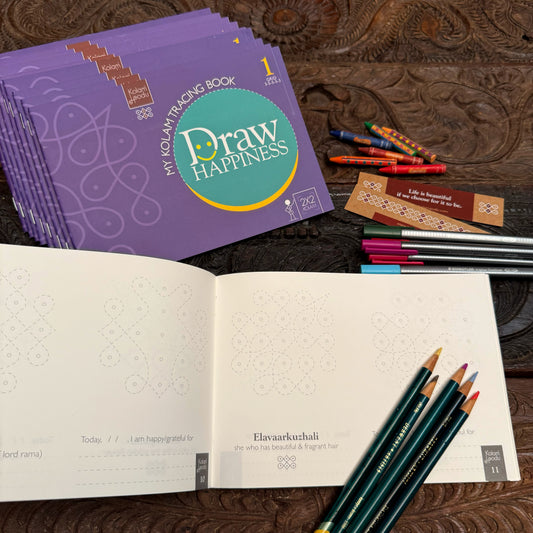Kolam, known by different names across regions in India, is not just visually appealing but also a source of cognitive benefits. Engaging in kolam creation enhances creativity and problem-solving skills. This traditional art encourages creative expression, sharpens visual perception, fosters pattern recognition, improves concentration, embraces experimentation, and reduces stress. Embracing kolam as a cultural tradition provides an enjoyable path to boost creativity and problem-solving abilities.
Kolam, an ancient art form practiced in various regions with names: muggulu in Andhra Pradesh and Telangana, rangoli in Maharashtra, hase and rangavali in Karnataka, alopana in Bengal, to name a few, offers a myriad of benefits that go beyond its visual appeal. Engaging in kolam creation can significantly improve creativity and problem-solving skills. Let's delve into how this traditional art form fosters such cognitive enhancements:
- Creative Expression: Designing kolams involves intricate and captivating patterns crafted by hand using rice flour or colored powders. This artistic process stimulates creative thinking, providing a platform for individuals to express their unique ideas and artistic styles.
- Visual Perception: The practice of creating kolams requires a keen sense of visual perception. By closely observing shapes, symmetry, and spatial relationships, individuals develop their ability to analyze and interpret visual information effectively. This skill extends to other domains, enriching problem-solving abilities in various contexts.
- Pattern Recognition: Kolams often feature repetitive geometric patterns. Consistent practice in kolam design nurtures a natural affinity for recognizing patterns, a valuable skill in problem-solving tasks that involve identifying patterns or trends.
- Concentration and Focus: The creation of kolams demands utmost concentration and attention to detail. Regular engagement in this art form improves focus, allowing individuals to immerse themselves fully in the task at hand. Heightened focus positively impacts problem-solving capabilities, enabling individuals to delve into complex issues without distractions.
- Trial and Error: Kolam design embraces an essential aspect of experimentation. Exploring different patterns, shapes, and colors encourages a mindset of exploration and an embrace of the trial-and-error approach. This adaptable mindset is essential in problem-solving, where the willingness to explore various solutions and learn from mistakes often leads to innovative breakthroughs.
- Stress Reduction: Participating in kolam creation can be a meditative and calming experience. This artistic practice helps reduce stress and fosters a calm state of mind, which, in turn, enhances creativity and problem-solving abilities by creating a conducive environment for clear thinking and idea generation.
In conclusion, kolam, encompassing simple kolam, rangoli kolam, muggulu, and muggu, offers a rich array of cognitive benefits. It serves as an artistic outlet for creative expression, nurtures visual perception skills, promotes pattern recognition, cultivates focus, encourages experimentation, and facilitates stress reduction. Embracing kolam as a cultural and artistic tradition provides an enjoyable path towards enhancing creativity and problem-solving skills.
Life is beautiful if we choose for it to be. Let's draw happiness!







